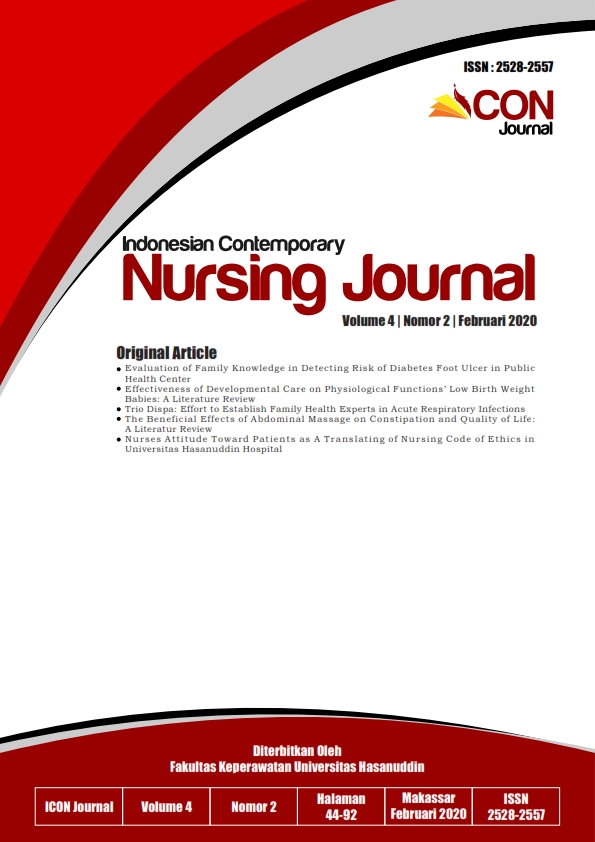Effectiveness of Developmental Care on Physiological Functions’ Low Birth Weight Babies: A Literature Review
Keywords:
developmental care, LBW infant, NICU, physiological functionAbstract
Introduction: Infants with low birth weight (LBW) is a major risk factor for increased morbidity and mortality rate. LBW infants that getting treatment in the neonatal intensive care unit (NICU) will be exposed to various environments and excessive stimulus with various procedures performed that causing stress on the infant. Management strategies that can be done to reduce stress of the excessive stimulus is with developmental care. This literature review is aimed to identify the effectiveness of developmental care on physiological functions of LBW infants in the NICU. Method: Articles were collected from several databases including Medline, CINAHL, EBSCOhost, Google Scholar, PubMed, and Proquest. The keywords were developmental care, low birth weight infant, neonatal intensive care unit, and physiological function were searched for quantitative studies. The articles reviewed were only articles with full text, written in English, and published during period 2013 to 2018. The study was criticized by the author using the Critical Appraisal Tool from JBI (Joanna Briggs Institute). It found 10 articles that related specifically to developmental care on LBW infants in the NICU. Result: Implementation of developmental care for infants in the NICU effective in optimizing the physiological functions of infant, including lowering the pulse and frequency of breath that makes the infant more relaxed. Developmental care can also improve oxygen saturation, reduce pain, reduce gastro esophageal reflux, increase sleep time, and improve neuromuscular maturity. Conclusion: Developmental care facilitate the infant more relaxed. The infant needs regularity of physiological functions and achieving restful sleep to grow and thrive.Downloads
Download data is not yet available.
Dimensions
Published
2020-02-25
How to Cite
Hendrawati, S., Adistie, F., & Maryam, N. N. A. (2020). Effectiveness of Developmental Care on Physiological Functions’ Low Birth Weight Babies: A Literature Review. Indonesian Contemporary Nursing Journal (ICON Journal), 4(2), 52-63. https://doi.org/10.20956/icon.v4i2.9010
Issue
Section
ARTICLES
Copyright & Licensing
Authors who publish with this journal agree to the following terms:
Authors retain copyright and grant the journal right of first publication with the work simultaneously licensed under a Creative Commons Attribution License that allows others to share the work with an acknowledgement of the work's authorship and initial publication in this journal.
Authors are able to enter into separate, additional contractual arrangements for the non-exclusive distribution of the journal's published version of the work (e.g., post it to an institutional repository or publish it in a book), with an acknowledgement of its initial publication in this journal.
Authors are permitted and encouraged to post their work online (e.g., in institutional repositories or on their website) prior to and during the submission process, as it can lead to productive exchanges, as well as earlier and greater citation of published work (See The Effect of Open Access).
Authors retain copyright and grant the journal right of first publication with the work simultaneously licensed under a Creative Commons Attribution License that allows others to share the work with an acknowledgement of the work's authorship and initial publication in this journal.
Authors are able to enter into separate, additional contractual arrangements for the non-exclusive distribution of the journal's published version of the work (e.g., post it to an institutional repository or publish it in a book), with an acknowledgement of its initial publication in this journal.
Authors are permitted and encouraged to post their work online (e.g., in institutional repositories or on their website) prior to and during the submission process, as it can lead to productive exchanges, as well as earlier and greater citation of published work (See The Effect of Open Access).

